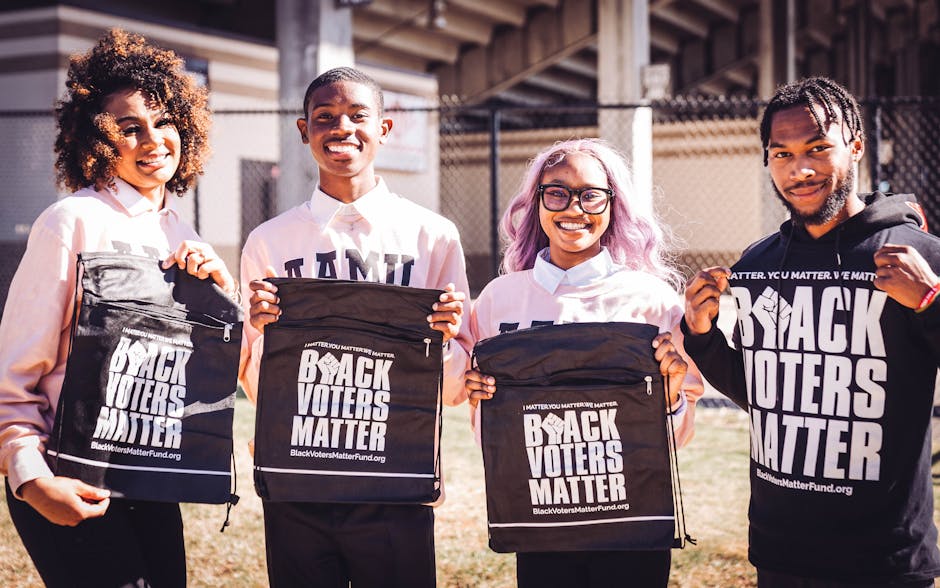Increasing Visibility for Social Causes
When it comes to advocating for social causes, visibility is key. The more people are aware of an issue, the more likely they are to take action to support it. In a world filled with noise and distractions, standing out and getting noticed can be a daunting task. However, with the right strategies and tools, increasing visibility for social causes is not only possible but also essential for creating meaningful change. In this article, we will delve into the intricacies of how to effectively increase visibility for social causes, exploring various methods, case studies, and expert opinions to provide you with a comprehensive understanding of this crucial topic.
The Power of Visibility
Visibility plays a crucial role in the success of any social cause. When an issue is visible to a wide audience, it garners attention, sparks conversations, and mobilizes support. Increased visibility can lead to greater awareness, increased funding, and ultimately, positive change. Without visibility, even the most important social causes risk being overlooked and forgotten. So, how can organizations and individuals increase visibility for the causes they care about?
Utilizing Social Media

In today’s digital age, social media has become a powerful tool for raising awareness and increasing visibility for social causes. Platforms like Facebook, Twitter, and Instagram allow organizations to reach a global audience instantaneously. By creating engaging content, leveraging hashtags, and collaborating with influencers, social media can be a game-changer in spreading the word about important causes. For example, the #BlackLivesMatter movement gained widespread visibility and support through social media, leading to protests, policy changes, and increased awareness of racial injustice.
Partnering with Influencers
Celebrities, influencers, and public figures have a massive following on social media, making them valuable partners in increasing visibility for social causes. By collaborating with influencers who are passionate about a particular cause, organizations can reach a larger and more diverse audience. For instance, when Greta Thunberg, a young climate activist, partnered with international celebrities to raise awareness about climate change, the issue gained significant visibility and momentum.
Organizing Events and Campaigns
Hosting events, rallies, and campaigns is another effective way to increase visibility for social causes. By bringing people together in person, organizations can create a sense of community, solidarity, and urgency around a cause. For example, the Women’s March, organized in cities around the world, drew attention to gender equality issues and inspired millions to take action. Events can generate media coverage, social media buzz, and public interest, amplifying the visibility of a cause.
Collaborating with the Media
The media plays a crucial role in shaping public opinion and raising awareness about social issues. By partnering with journalists, bloggers, and news outlets, organizations can secure coverage and exposure for their causes. Crafting compelling press releases, pitching stories to reporters, and leveraging media contacts can help amplify the visibility of a social cause. For example, the #MeToo movement gained traction and visibility through media coverage, leading to a global reckoning on sexual harassment and assault.
Engaging with Communities
Building relationships with local communities, grassroots organizations, and advocacy groups is essential for increasing visibility for social causes. By collaborating with community leaders, activists, and volunteers, organizations can tap into existing networks and amplify their message. Engaging with diverse communities ensures that a cause resonates with a wide range of people and fosters a sense of solidarity and support. For instance, the LGBTQ+ rights movement has gained visibility and momentum by engaging with LGBTQ+ communities, allies, and supporters around the world.
Measuring Impact and Adjusting Strategies
Tracking the impact of visibility strategies is crucial for assessing their effectiveness and making necessary adjustments. Monitoring social media metrics, website traffic, media coverage, and public engagement can provide valuable insights into what is working and what needs improvement. By analyzing data and feedback, organizations can refine their strategies, target their efforts more effectively, and maximize the visibility of their causes. Constant evaluation and adaptation are key to sustaining momentum and achieving long-term impact.
Conclusion
In conclusion, increasing visibility for social causes is a multifaceted and dynamic process that requires creativity, persistence, and collaboration. By leveraging the power of social media, partnering with influencers, organizing events, collaborating with the media, engaging with communities, and measuring impact, organizations and individuals can effectively raise awareness, spark conversations, and mobilize support for important causes. Visibility is not just about being seen; it’s about making a lasting impact and driving meaningful change. So, whether you’re advocating for environmental conservation, social justice, human rights, or any other cause, remember that visibility is the key to making a difference.
Remember, the more visible a cause is, the more likely it is to attract attention, support, and action. By employing a combination of strategies, including social media, influencer partnerships, events, media collaborations, community engagement, and data analysis, organizations can effectively increase visibility for social causes and drive positive change. So, let’s continue to shine a spotlight on important issues, amplify voices, and work together to create a more just, equitable, and compassionate world.




